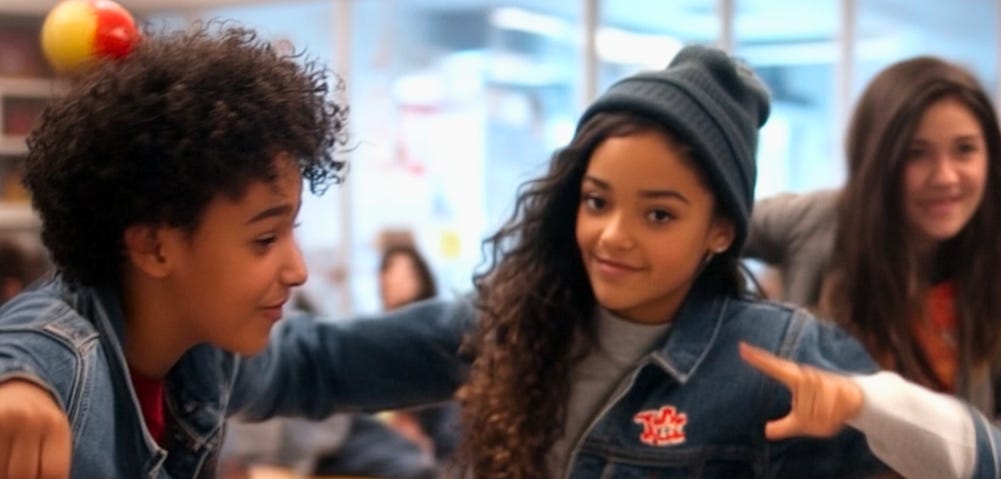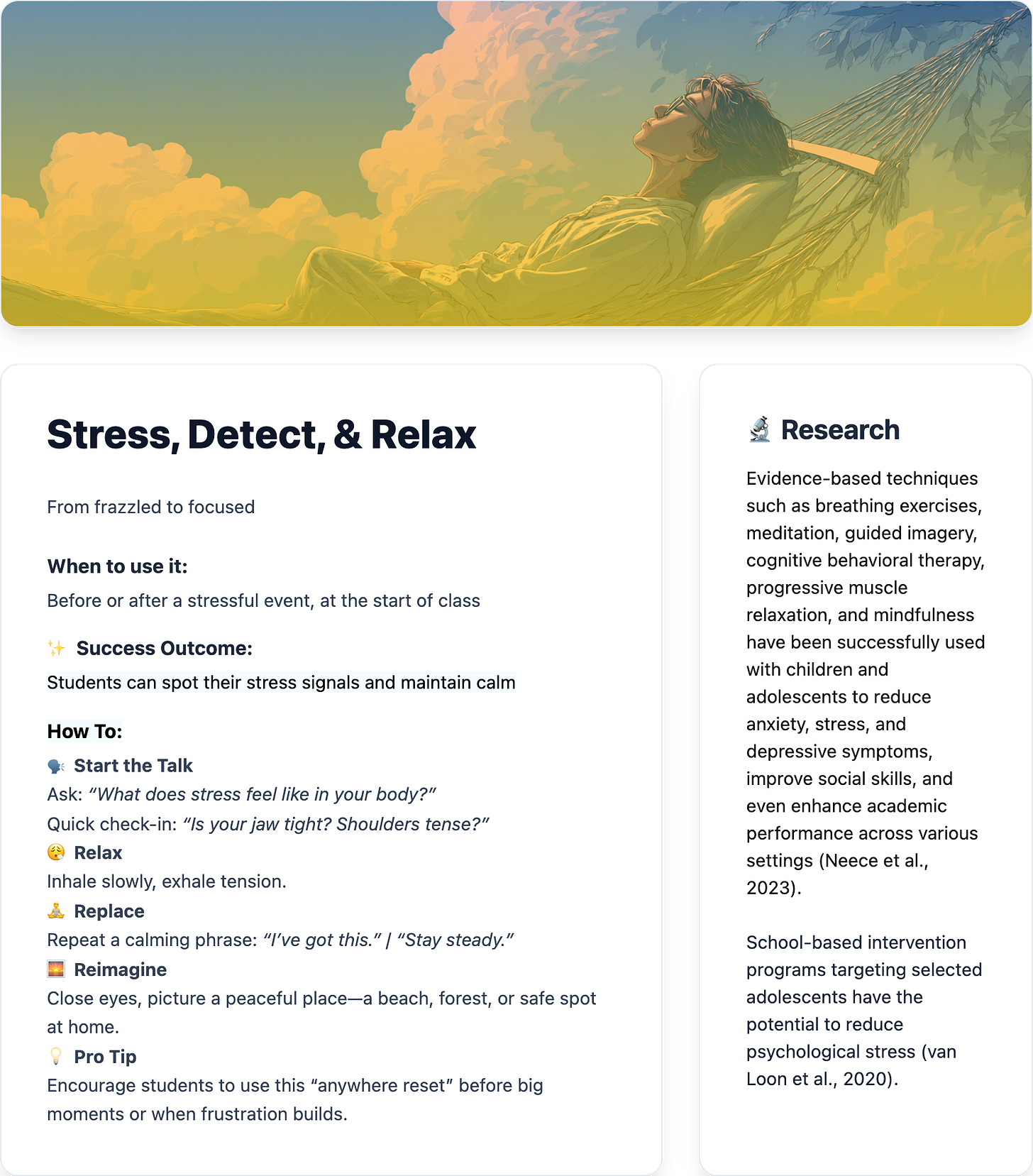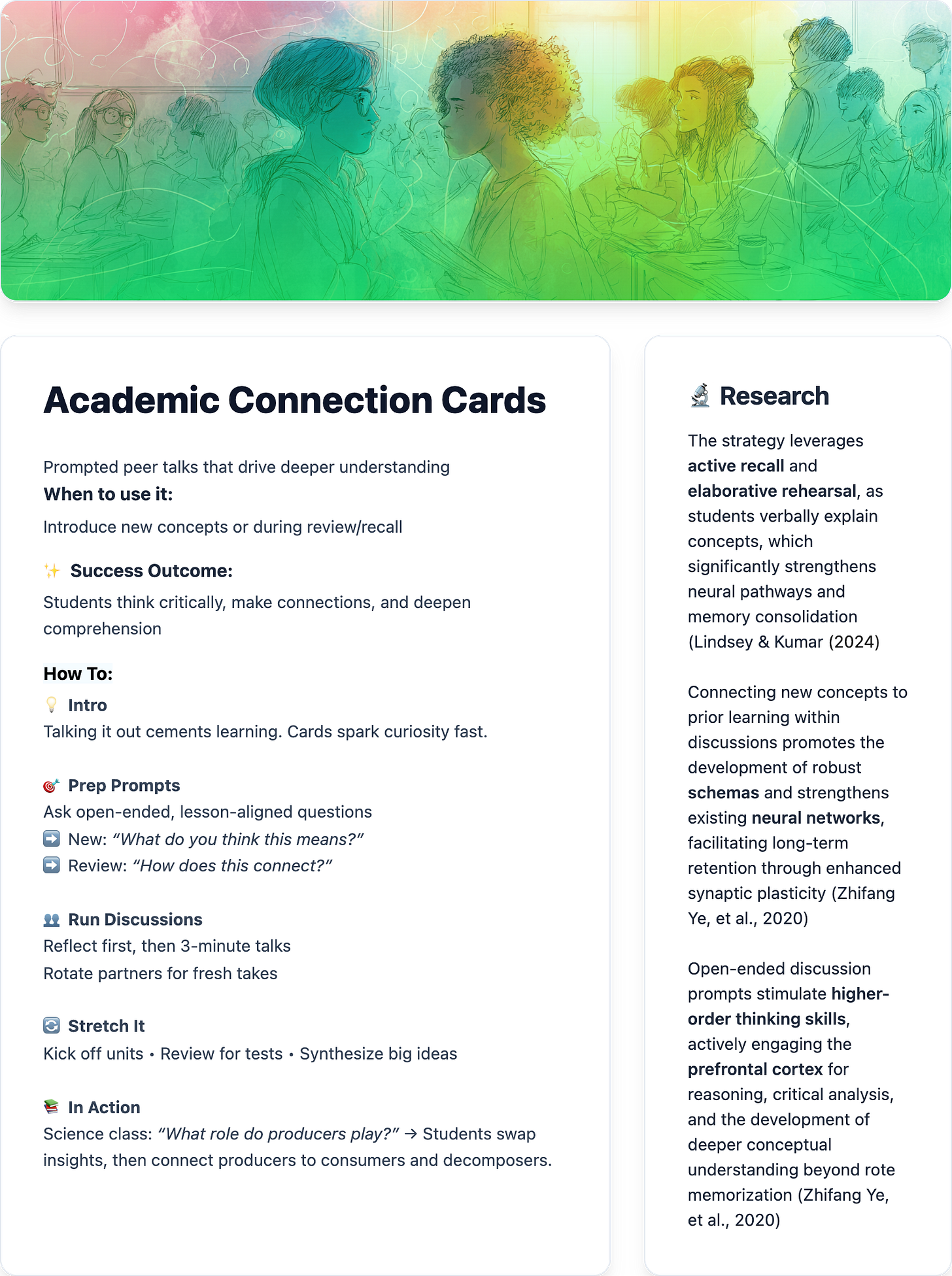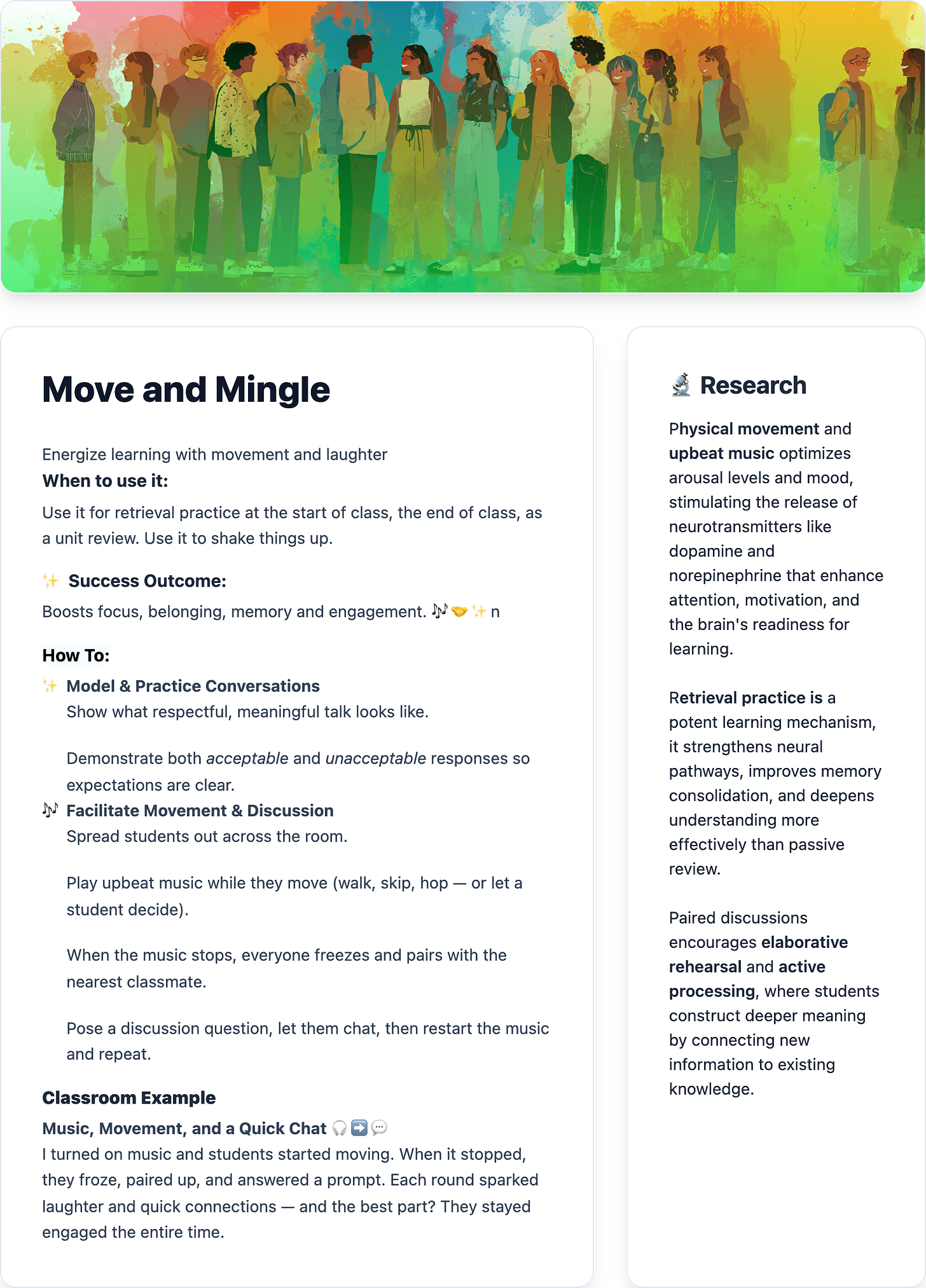How the Brain Shapes Classroom Culture and Relationships
How teachers can apply neuroscience to build trust and engagement
Classrooms often carry a quiet tension at the start of class, with students and teachers arriving from different mental states. Some are excited, others upset or distracted. A few may feel restless, unhappy, or nervous. Learning and your lesson will be far more effective if you start by shifting everyone to a relaxed, calm, and open state, preparing their minds for learning.
To bring everyone into the same space, the teacher begins with a simple breathing exercise. The class takes a few slow breaths together, inhaling, pausing briefly, and then exhaling. The chatter begins to fade, shoulders drop, attention steadies, and the room feels more present. In just two minutes, the practice signals to the brain that it is safe here, creating a shared readiness for the learning ahead.
The Core Concept
Classroom culture is an evolving ecosystem where relationships, emotions, behaviors, and learning experiences continuously interact, mirroring the neurological shifts in the minds of students and teachers. When educators recognize and guide these rhythms, they create conditions for trust, safety, and collective growth.
The feeling of a positive and uplifting classroom culture is more than just a byproduct of good teaching; it reflects real changes in students’ brains. Neuroscience shows that when students feel safe and connected, their brain shuts down distracting thoughts and becomes engaged and present; a pattern highlighted in work by the Child Mind Institute (source). You can see it in the moment a noisy class settles into shared focus and the side chatter fades, shoulders relax, and students lean in together as if the room has taken one collective breath.
The two-minute breathing activity shared previously is an example of this, as the breath calms the nervous system and creates space for the brain to let down its guard, engage the prefrontal cortex, and trust that the culture is safe. This receptive state then opens the door to curiosity, focus, and authentic engagement, the foundation of meaningful learning.
A Message to the Brain: Every moment in the classroom begins with a brain state. When you regulate the state, you guide the learning.
3 Foundations of Classroom Culture: Calm, Collaborative, and High-Energy
I see these three brain states, or zones, as the foundation of classroom culture and relationships. Brain states are temporary conditions of the brain such as calm, collaborative, or high-energy. They shape how students feel, think, and act in the moment.
To make this idea practical for teachers, we developed the BrainZones (BZ) Model. The model highlights these states as central drivers of behavior and engagement and connects them directly to strategies teachers can use every day. By recognizing the zone students are in, educators can shift learning, pace, relationships, and culture. Grounded in neuroscience, the BZ Model shows how intentional strategies can transform classroom experiences.
A Message to the Brain: Every behavior, meltdown, and breakthrough begins in the brain. The key is matching the right state to the right strategy at the right time.
Creating a Calm State
A deep, mindful breath is a powerful tool for shifting the classroom state. Practiced as a class, it activates the parasympathetic nervous system (PSNS), the body’s natural “rest and digest” mode, and helps everyone settle into what the BZ Model defines as the Blue Zone. Learning is most effective when students begin in a shared state of readiness. Often, that means establishing calm at the start of class. This same calm state can also be re-created during moments of stress, giving students and teachers a consistent way to reset and refocus.
Here, the teacher’s steady presence matters. When students join their teacher in this shared rhythm of breathing, the nervous system begins to quiet and a culture of trust starts to form. Over time, the classroom itself becomes associated with safety and calm. With repeated practice, this routine strengthens neural pathways for self-regulation, linking calm with safety and focus. Over time, the classroom itself becomes a space students associate with trust and learning.
Creating a Receptive State
The Blue Zone is where students find the quiet focus needed for learning. In this state, distractions fade, the nervous system steadies, and the brain becomes open to reflection and creativity. A simple strategy to guide students into this state is Stress, Detect, & Relax, which helps them recognize stress signals and shift into calm. You will find the full strategy at the end of this article.
A Message to the Brain: A daily practice of breath awareness is more than a brain reset. It becomes a pathway to trust, focus, and growth.
Activating the Social Brain
The Green Zone is where communication flows and connections grow. This network of brain regions is activated by our interactions with others and forms the foundation of strong relationships and community. A classroom that feels dynamic, happy, and engaged is not an accident; it reflects a teacher who has nurtured this dynamic through positive reinforcement, modeling, and repetition.
The key is to give students opportunities to laugh, struggle, and achieve success together. When students engage in prosocial behavior and collaborative learning, their brains release oxytocin and dopamine, the chemicals that reinforce belonging and motivation. During a group challenge, one student’s joke sparks laughter that ripples across the table. Soon they are leaning in, redrawing arrows, voices buzzing in shared problem-solving.
By intentionally creating collaboration and celebrations, you train students’ brains to value interaction, build confidence, and strengthen understanding. Over time, these moments wire the brain’s social pathways, making connection and belonging part of the classroom culture.
Building Connection
The Green Zone is an energetic, optimistic state of mind, known for flexible thinking, peer-to-peer learning, and shared experiences. A simple strategy to spark this state is Academic Connection Cards, which use short prompts to engage students in meaningful conversations. You will find the full strategy at the end of this article.
Message to the Brain
Belonging fuels the brain’s social networks. Connection and trust lay the foundation for deeper learning.
The High-Energy Classroom
The Orange Zone is where energy runs high and learning becomes charged with emotion and momentum. This fast-paced state fuels active learning and engagement, but it also requires balance. In this state, the amygdala is highly active and the brain releases chemicals like norepinephrine to sharpen focus and dopamine to reinforce motivation.
When students are immersed in quick-paced activities, their reactions are spontaneous, laughter spreads, and excitement strengthens memory. Think of a review game where hands shoot up, voices rise, and the room buzzes with energy. Emotion drives attention, and the charge of the moment makes learning stick. Yet these same attributes can flip quickly, what fuels motivation one moment can spill into distraction, chaos, or conflict the next if not guided with intention.
Channeling Energy
The Orange Zone works best when teachers use strategies that both fuel excitement and direct it with purpose, keeping momentum from sliding into distraction. Strategies like Press Pause and Mannequin Challenge give students a chance to release energy while staying on task. Another favorite is Move & Mingle, where music, movement, and peer discussion turn momentum into connection. You will find the full version of this strategy at the end of the article.
Message to the Brain: Emotion charges memory. Energy and repetition create the lasting pathways that build engagement and resilience.
Strategies in Action
Strategies bring the BrainZones Model to life. Here are three evidence-based and classroom-tested approaches that help shift brain states, build culture, and keep learning on track.
Stress, Detect, & Relax
A quick reset that guides students to notice stress, release tension, and return to calm.
Academic Connection Cards
Short prompts that spark peer conversations, strengthen relationships, and deepen content learning.
Move & Mingle
An active mix of music, movement, and discussion that channels energy into focus and connection.
The Neuroscience in Practice
Classroom culture is created moment by moment. Each breath, each connection, and each burst of energy shapes how students learn, trust, and engage. The BrainZones Model shows that every classroom shift begins in the brain. When teachers guide those shifts with intention, they shape a culture where learning and relationships thrive.
Final Message to the Brain: Every classroom moment begins with a brain state. When teachers guide those states with purpose, they build culture, trust, and learning that last.
👋 Thanks for Reading
Have a great week, and don’t forget, shift happens to the best of us!
Debbie






